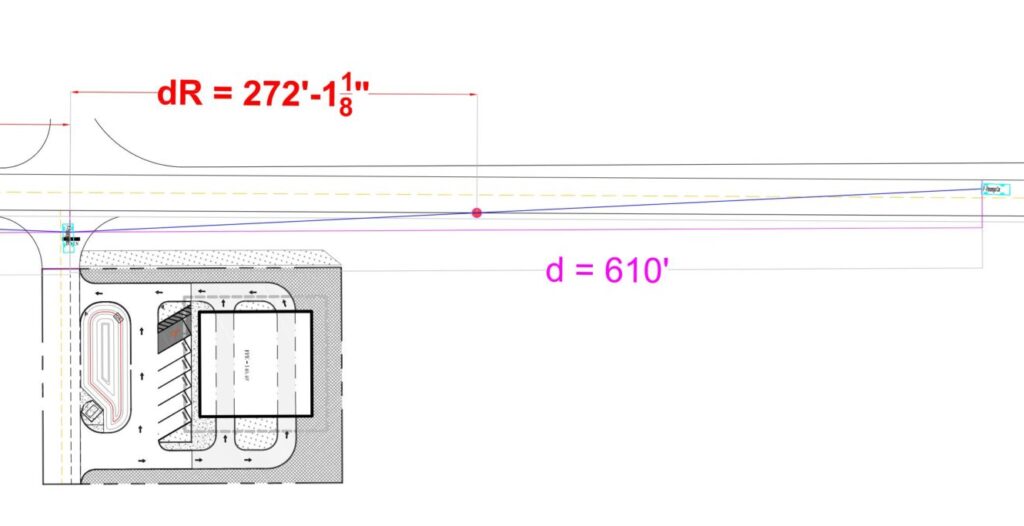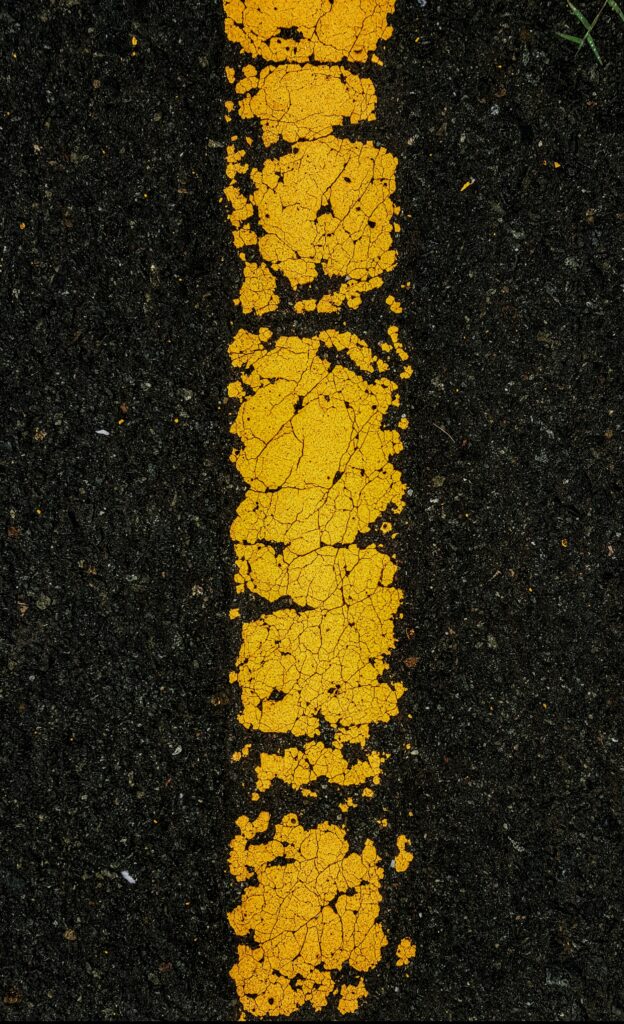Sight distance is one of the most important considerations in road design. It represents the length of roadway visible to a driver, ensuring there is enough distance to perceive, react, and stop safely when encountering obstacles or conflicts. Inadequate sight distance can lead to unsafe conditions, higher crash risks, and poor traffic flow.
This reference summarizes the key sight distance requirements used in highway and street design, including stopping sight distance, passing sight distance, and intersection sight triangles.
Types of Sight Distance
- Stopping Sight Distance (SSD):
- The minimum distance a driver needs to perceive an object, react, and stop safely.
- Critical for all roadway segments.
- Passing Sight Distance (PSD):
- The minimum length required on two-lane, two-way roads for a vehicle to overtake another safely without conflict.
- Decision Sight Distance (DSD):
- Longer distance that allows a driver to detect an unexpected situation, decide on a maneuver, and complete it safely.
- Intersection Sight Distance (ISD):
- Ensures vehicles entering or crossing a major road have adequate visibility to complete the maneuver safely.
Stopping Sight Distance (SSD)
SSD depends on perception-reaction time and braking distance. AASHTO recommends a reaction time of 2.5 seconds and a deceleration rate of 11.2 ft/s² (3.4 m/s²).
| Design Speed (mph) | SSD (ft) | SSD (m) |
|---|---|---|
| 20 | 155 | 47 |
| 30 | 200 | 61 |
| 40 | 305 | 93 |
| 50 | 425 | 130 |
| 60 | 570 | 174 |
| 70 | 730 | 223 |
Notes:
- SSD should be provided continuously along the roadway.
- On vertical curves, crest curves are governed by SSD requirements.
Passing Sight Distance (PSD)
On two-lane roads, passing sight distance is required to allow overtaking.
| Design Speed (mph) | PSD (ft) | PSD (m) |
|---|---|---|
| 30 | 800 | 245 |
| 40 | 1,150 | 350 |
| 50 | 1,500 | 460 |
| 60 | 1,800 | 550 |
| 70 | 2,100 | 640 |
Notes:
- No-passing zones should be marked where PSD is inadequate.
- Crest vertical curves often control PSD availability.
Decision Sight Distance (DSD)
Decision sight distance accounts for situations where a driver may need more time to detect and respond (e.g., complex interchanges, unexpected conditions).
| Design Speed (mph) | DSD (ft) | DSD (m) |
|---|---|---|
| 30 | 495–645 | 150–195 |
| 50 | 730–945 | 225–290 |
| 70 | 1,015–1,330 | 310–405 |
Intersection Sight Distance (ISD)
Adequate sight triangles must be provided so drivers at intersections can see approaching traffic.
- Case A (Stop-Controlled Intersection): Driver on the minor road must see approaching vehicles on the major road.
- Case B (Yield / Uncontrolled Intersection): Both approaches must have sufficient sight distance to avoid collisions.
Typical values for passenger cars entering a major road from stop control:
| Design Speed on Major Road (mph) | ISD (ft) | ISD (m) |
|---|---|---|
| 30 | 335 | 100 |
| 40 | 445 | 135 |
| 50 | 555 | 170 |
| 60 | 665 | 200 |

Design Considerations
- Horizontal Curves: Ensure sight lines are not blocked by roadside barriers, vegetation, or walls.
- Vertical Curves: Crest curves are designed based on SSD/PSD needs.
- Clear Zones: Obstructions (signs, poles, landscaping) should be kept out of sight triangles.
- Lighting: Adequate lighting improves nighttime visibility, but SSD/PSD requirements remain based on headlight illumination.
Summary Tables
Stopping Sight Distance by Speed
- 30 mph → 200 ft (61 m)
- 50 mph → 425 ft (130 m)
- 70 mph → 730 ft (223 m)
Passing Sight Distance by Speed
- 40 mph → 1,150 ft (350 m)
- 60 mph → 1,800 ft (550 m)
Intersection Sight Distance (Stop-Controlled)
- 40 mph → 445 ft (135 m)
- 60 mph → 665 ft (200 m)
Conclusion
Sight distance is fundamental to safe roadway design. By ensuring adequate stopping, passing, decision, and intersection sight distances, designers can improve safety, efficiency, and driver comfort. These values should always be checked in geometric design to avoid creating unsafe conditions.



